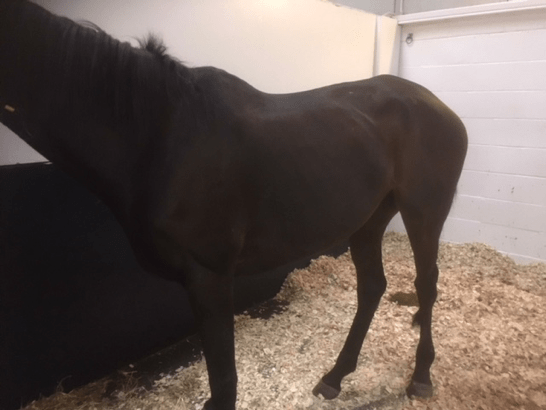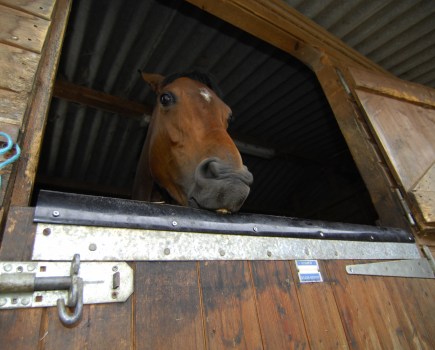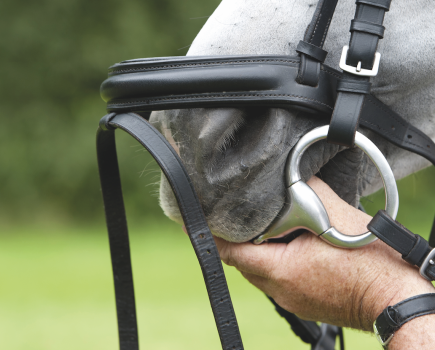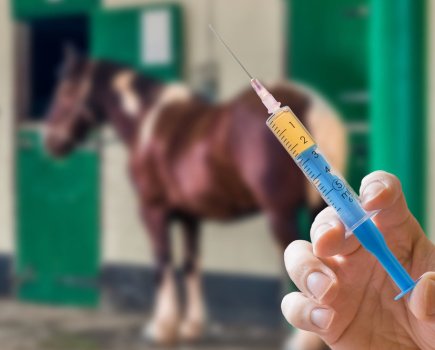Steph Cook BVM&S MRCVS from Scott Mitchell Associates vets, a member of the XL Vets Equine, tells us about a very sick diarrhoea case.
I went to see Lilly, a 13-year-old TB mare that had explosive diarrhoea (it actually was firing out as water all up the walls).
I checked her heart rate, breathing rate and temperature and they were all within the normal range, but when I checked the colour of her gums, I noticed they were turning a darker pink than the usual salmon pink. This is an indication of toxins building up in her system.
Blood test results also showed that she was losing protein so it was decided that she should come into the clinic for further treatment.
A trip to the vets
Lily arrived at the clinic where she had a catheter fitted and was put on fluids to help with her dehydration.
At this stage, she was already becoming more toxic and her gums had a purple rim around her teeth.
We put Lilly in isolation as we didn’t know if her diarrhoea was infectious to other horses, or even to us or other animals.
We had to wear full suits, with boot covers, gloves and hats. Everything we needed was passed over from the safe zone before we went into the isolation ward.
Lilly was given Flunixin, an anti-inflammatory, at frequent small doses to counteract the toxins. Her faeces were sent to the laboratory for analysis and two days later they came back to show a negative result for two types of clostridial bacteria.
Thankfully, a test for salmonella also came back negative and Lilly was allowed out of isolation.
Improving in health
As Lilly started to improve in her appetite and clinical signs, the method of administering her fluids was changed from going in her vein through the catheter, to going directly into her stomach
A tube was passed into her stomach and stitched in place at her nose so that we didn’t need to repeatedly pass the tube and she could have a steady flow of fluids.
This meant the cost of her treatment was more manageable for Lilly’s owner, as the fluids going into her stomach didn’t need to be sterile, unlike those going into her veins.
We also did a faecal worm egg count for Lilly and this came back with a count of 0 eggs per gram, reducing the likelihood of worms being an instigator for the diarrhoea. At this stage, Lilly was brighter, and eating more, but we still hadn’t found a cause for the diarrhoea.
Further investigation
We performed an ultrasound scan of Lilly’s abdomen through her skin. This revealed a thickened wall in part of her large intestine, called the right dorsal colon. Now we finally had a diagnosis of right dorsal colitis (inflammation of the right dorsal colon).
With this, we could treat her accordingly. The job of the right dorsal colon is to digest the long fibres of a horse’s diet e.g. hay or haylage.
For the next four to six months, Lilly would be allowed either none or minimal amounts of this in her diet, as it was too much work for this inflamed part of her gut to be able to do. She was to be turned out on grass, with lots of small feeds of chaff and conditioning cubes.
The next day, Lilly’s stomach tube was removed, as her bloods showed she was no longer dehydrated. Her faeces were firming up to being cow pats, and she was maintaining her hydration through her diet.
Her weight loss was profound by this stage, and she still looked weak on her legs if walked across the equine unit.
We hoped that, with time and continuing on the correct diet, Lilly would gain weight and muscle tone once her gut healed and stopped leaking protein.
She went home on the above diet, with gastroguard, and sucralfate to help heal any ulcers. Her bloods were re-tested two weeks after being back at home, and this showed that her protein (albumin) levels were normal, indicating that her colon had healed.
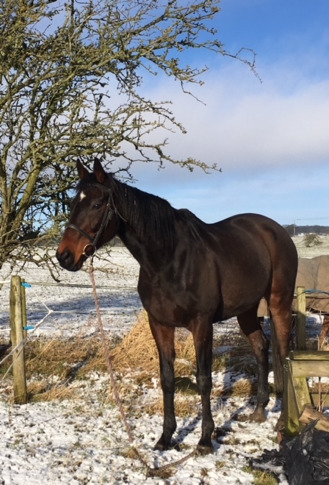
Lilly – getting back to her best
As you can see from the photo below she is doing just fabulous. She’s put on a good amount of weight, and her owner reports she’s full of energy and back in light work. Her body is coping well with having small amounts of forage and she hasn’t had any more diarrhoea episodes.
Don’t miss the latest issue of Your Horse Magazine, jam-packed with training and veterinary advice, horse-care tips and the latest equestrian products available on shop shelves, on sale now.

